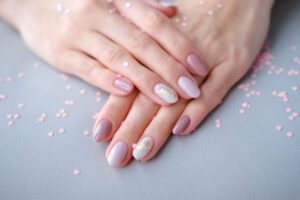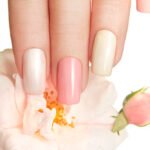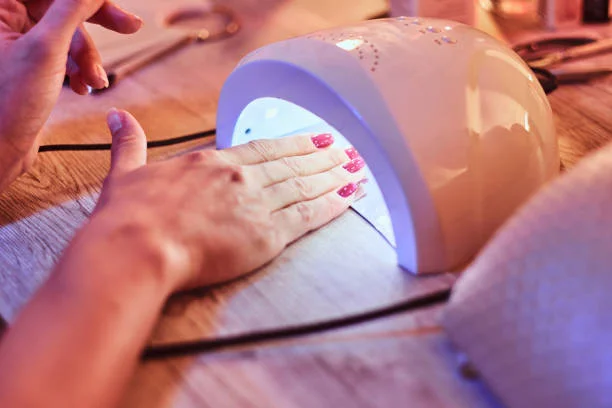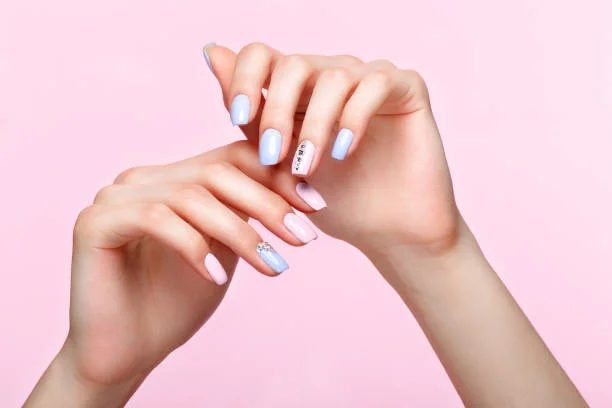Biodegradable nail paint for green beauty
Beauty and cosmetics are emphasizing sustainability and environmental friendliness. Biodegradable nail paint is a beacon for eco-conscious beauty enthusiasts. Since nail studio is associated with harsh chemicals and ecological harm, eco-friendly alternatives are in demand.
Revolutionary biodegradable nail polish beautifies and saves the environment. Today’s products break down faster in the environment and typically contain long-lasting synthetic components. Biodegradable formula uses natural elements to reduce pollution and improve the environment.
Biodegradable nail paints are challenging yet rewarding. Scientists and beauty specialists investigated organic chemistry to create environmentally friendly chemicals with durability, shine, and color variation. This trend has produced biodegradable glitter from cellulose, water-based formulations, and natural colorants for eco-conscious consumers.
A zero-waste lifestyle makes biodegradable nail polish enticing. Polish biodegradability and recycled or refillable packaging are priorities for manufacturers. This holistic approach prolongs product life and cuts nail care waste.
Another benefit of biodegradable nail polish is health. Traditional nail polishes contain known health hazards such as toluene, dibutyl phthalate, and formaldehyde. Biodegradable products are safer for daily salon and consumer use.
As the eco-friendly nail care movement evolves, certifications and labeling help consumers find products that meet high environmental and health criteria. “Certified Biodegradable” and “10-free,” which eliminates ten toxic compounds, make a product eco-friendly. Sustainable and safe marks guide consumers in the green beauty sector.
Biodegradable nail polish is a simple but effective environmental solution. Choose these things over traditional ones to convey sustainability and personal responsibility for rescuing the world. It encourages companies to develop eco-friendly beauty products.
Eco-conscious customers and beauty enthusiasts are expanding, driven by a desire to make the beauty business more sustainable. Social media, beauty blogs, and forums are popular places to discuss biodegradable nail polish companies and techniques. This grassroots movement aims to change industrial trends toward environmental stewardship and individual decisions.

In conclusion, biodegradable nail polish is a significant step toward sustainable beauty. These products combine aesthetics and environmental awareness, promoting eco-friendly living at every drop. As demand for green beauty solutions rises, we may expect further advancements, leading the beauty sector toward a glamorous, eco-friendly future. Biodegradable nail care is more than a trend—it shows the power of collective action and the human desire to live in harmony with nature.
How Water-Based Polishes Promote Sustainable Beauty
Water-based nail polishes changed eco-friendly nail care. Like other cosmetic rituals, nail studios have long used products with dangerous volatile organic compounds (VOCs) and other chemicals. Ecologists and beauty professionals prefer water-based polishes, which are safer.
Water-based nail paints don’t utilize harsh chemicals; therefore, they reduce VOCs and the environmental impact of nail care.
The benefits of water-based polishes go beyond sustainability. These formulations are easier on nails and skin, making them ideal for delicate skin or healthy cosmetics. Unlike traditional polishes that strip nails of natural oils and promote brittleness and peeling, water-based polishes nourish the nail bed and epidermis.
Additionally, water-based nail paints have enabled sustainable beauty innovation. Eco-friendly brands introduce items with fewer chemicals, cruelty-free testing, vegan ingredients, and eco-friendly packaging. This holistic sustainability strategy reflects the beauty industry’s growing environmental and ethical consumerism awareness.
Water-based polishes are more indicative of water conservation and beauty efficiency. These regulations promote sustainable consumption by choosing water-efficient materials, supporting global water scarcity and resource conservation efforts. Manufacturers’ attempts to reduce water use during production make water-based polishes more sustainable.
Increasing research on water-based nail polishes has helped consumers adopt them. Water-based polishes have been reviewed, materialized, and suggested for sustainable beauty routines by beauty bloggers, eco-conscious influencers, and green beauty forums. This grassroots effort has increased demand for eco-friendly nail care products, encouraging manufacturers to supply more.
Water-based nail polishes have many benefits, but switching from traditional formulations is difficult for customers and businesses. Water-based polishes’ durability, drying time, and color brilliance are improving. Polymer technology and natural pigment composition have improved water-based polishes, making them comparable to traditional polishes.
Changing rules reflect the relevance of water-based polishes in sustainable beauty. Many countries and environmental groups acknowledge the need to reduce cosmetic chemical consumption, resulting in tighter eco-friendly formula rules. These laws are encouraging beauty industry innovation and safer, more sustainable solutions.
Bottom line: water-based nail polishes have revolutionized sustainable beauty. Beauty goods encourage environmental responsibility, health, and ethical consumerism, allowing consumers to make a difference. Water-based polishes will support sustainable practices as the beauty industry grows, predicting a future where beauty and sustainability are linked. Green nail care requires consumer, brand, and policymaker collaboration. Innovation, education, and lobbying create a sustainable beauty industry led by water-based nail paints.
Sustainable beauty is becoming more popular, and water-based nail polishes are a significant step. Beyond nail polish formulation, this movement changes consumer values and industry norms. Eco-friendly products are becoming increasingly popular, forcing firms to rethink formulae, packaging, and production. This change forces the cosmetics sector to rethink product development, marketing, and disposal.
Consumers learn about water-based polishes and eco-beauty. Customers desire brand transparency and accountability as they become more aware of beauty’s environmental and health consequences. Shorter, more consumer-friendly ingredient lists reflect this need for clarity. It seeks to demystify beauty products and promote sustainability.
Water-based nail polishes promote beauty inclusivity. The industry meets consumer needs by making products safer for children, pregnant women, and chemically sensitive adults. Besides human health, this inclusivity also benefits the world, proving our activities’ link and environmental influence.

The transition toward water-based nail polishes and ecological beauty mirrors a significant cultural shift toward environmental awareness and ethical consumption. The beauty industry’s sustainability initiatives are commendable and essential as climate change and environmental degradation become more apparent. This change reflects our rising awareness of global and future responsibilities in our daily purchasing.
Water-based nail polishes are more than a substitute for chemicals. They aim for sustainable, healthy, and eco-friendly living. Innovative beauty brands source, manufacture, package, and distribute sustainably. A closed-loop waste-reduction and recycling system is desired.
The discussion on water-based polishes and ecological beauty encompasses community and collaboration. Beauticians, influencers, and customers promote greener goods, tips, and eco-friendly companies. This community-driven strategy shows how multiplied efforts may change the environment.
Due to technological advances, customer demand, and a shared vision for a more sustainable world, the sustainable beauty movement will certainly promote water-based nail paints. Eco-friendly beauty requires industry collaboration to learn, adapt, and flourish. Sustainable methods like water-based polishes benefit health and the environment.









Leave a Reply